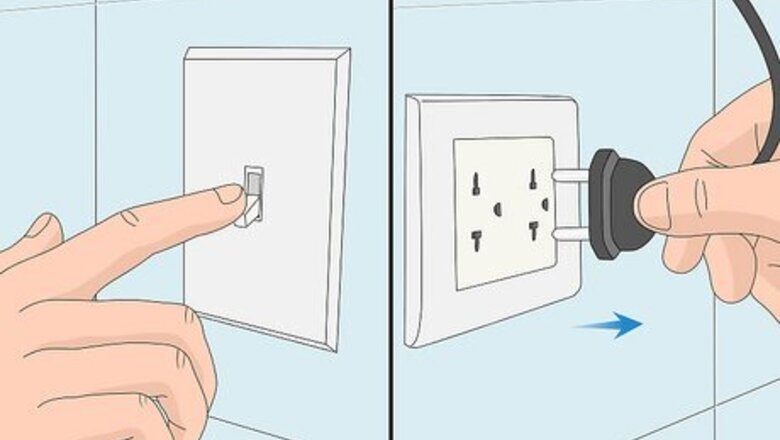
views
Cleaning the Grease Filter
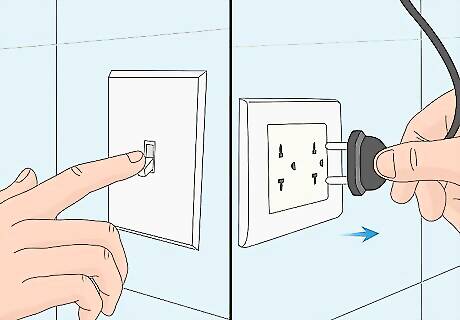
Turn off and unplug the exhaust fan. During this cleaning process, you will be working close to the electrical components of your exhaust fan. To minimize the risk of injury, fully unplug the exhaust unit before proceeding. If you just finished cooking, allow your exhaust fan to cool completely after you turn off the power. If your exhaust fan is attached to your microwave, unplug the appliance completely before removing the filter.
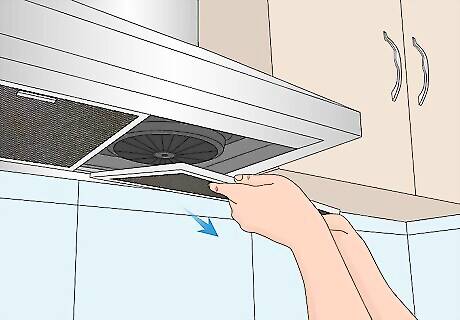
Remove the grease filter. The grease filter is typically located on the underside of the hood or microwave exhaust fan. Unhook any levers or tabs that are holding the filter in place and gently pull the dirty filter out. Most filters come out with little effort, but heavy grease build-up may cause some filters to stick. Slide a butter knife around the edges to loosen up a stubborn filter. Depending on your range hood, your filter might have handles you can grab and slide backward to pull it out. Other filters might have tabs to pinch in order to slide out. If you have trouble removing your grease filter, consult your owner’s manual or visit the manufacturer's website to find information for your specific make and model.
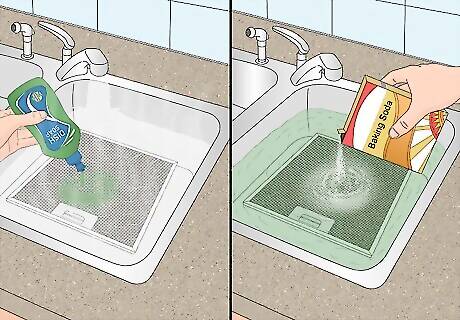
Put the filter in hot water with dish soap and sprinkle baking soda. Turn on your hot water tap and fill your sink so the filter is completely covered. Put about 1 tablespoon (15 mL) of dish soap into the water, then place the filter in the sink. Sprinkle a liberal amount of baking soda on the filter. If your sink isn’t big enough, use a sponge to saturate the filter before you add the baking soda. You can also use a deep sheet pan or container instead of the sink. Instead of dish soap and baking soda, place a dishwasher tab in hot water and let the filter soak for a couple of hours. Alternatively, boil water with 1 teaspoon (4.9 mL) of dish soap and 2 tablespoons (30 mL) of baking soda. Pour the cleaning solution over the filter. If your filter is dishwasher-safe, place it in your next load of dishes instead.
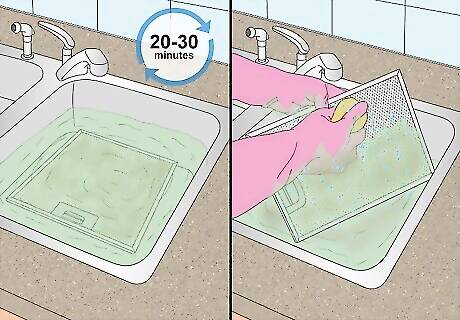
Let the filter soak for 15 to 30 minutes, then scrub away the grease. As the filter soaks, the baking soda and dish soap will slowly dissolve the grease. Use a non-abrasive sponge or soft-bristled brush to scrub away any remaining grease. Try to avoid using too much pressure or scrubbing aggressively—you may damage the grease filter. If you have not cleaned your filter in years, you may need to let it soak for up to an hour.

Rinse the filter off with hot water then let it air-dry completely. Rinse the filter under a steady stream of water or using your sink’s sprayer attachment, then shake it to remove excess water. Allow it to air-dry completely before placing it back in the hood or microwave—using a cloth or blow drying may damage your filter. The filter will dry completely after about an hour or two of air-drying. House cleaning professional Raymond Chiu says that if grease is still stuck on the filter after drying, repeat the soaking process.
Cleaning the Fan Blades
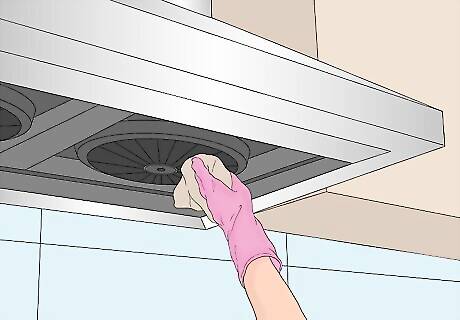
Wipe away any visible grease with baking soda, soap, or degreaser. Clean fan blades operate more efficiently, giving you better ventilation and prolonging the life of your blower unit. As you wipe the fan, try to avoid using pressure to prevent your exhaust fan from getting damaged. For light grease build-up: Use a baking soda paste and a damp non-abrasive sponge or microfiber cloth to wipe away any visible grease. For heavy grease build-up: Apply a thin layer of liquid dishwasher soap or a kitchen degreaser to the problem areas. Let the solution soak for 15 to 30 minutes.
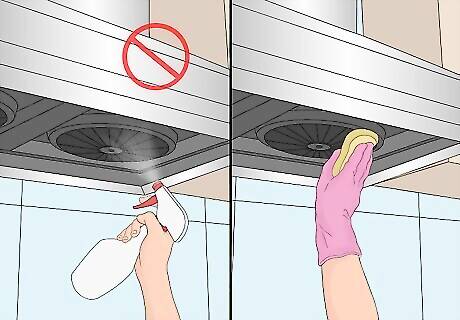
Remove any excess product with a damp sponge and dry with a towel. Try to avoid spraying a cleaning solution into the inner area of the fan—instead, use a damp or dry sponge to clean up the excess product and grease. Leaving moisture on inner components can result in electrical malfunctions and decrease the lifespan of your exhaust unit. If you see any loose debris on the fan blades and motor, use a vacuum cleaner with a brush attachment to remove it.

Re-insert the clean grease filter and plug the exhaust fan back in. After cleaning the inside and outside of the exhaust fan, re-insert the clean and dry grease filter. Re-attach any locking mechanisms or screws to secure the filter in place. Plug the exhaust fan or microwave back in. Turn the fan on to make sure everything is operating correctly.
Cleaning the Oven Range Hood
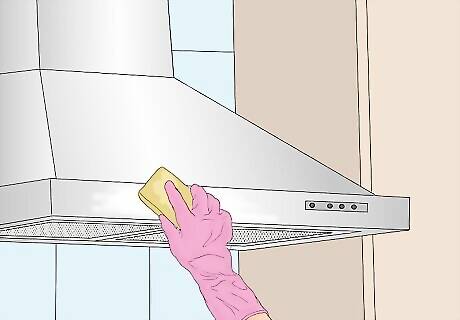
Wash the hood with a damp sponge and baking soda paste. Mix ½ cup (136 g) baking soda with 2 to 3 tablespoons (30 to 44 mL) of water, adjusting the ratio until you make a spreadable paste. Scoop up some of the paste with a damp sponge and scrub every part of the hood. As an alternative to baking soda, house cleaning professional Raymond Chiu recommends using “a couple drops of dishwashing liquid and warm water” instead. Alternatively, use a sponge and a spray-on kitchen degreaser to clean the outside of the hood. If your hood is removable, wash it in the sink with the baking soda paste or dish soap and water.
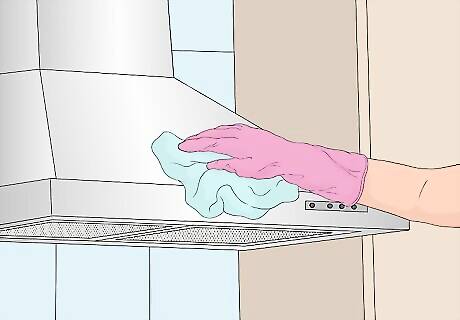
Dry the hood thoroughly with a kitchen towel or microfiber cloth. House cleaning professional Raymond Chiu recommends using “a clean cloth or paper towel to remove residue.” If the hood still feels sticky after drying, wash the hood a second time to remove the leftover grease. If your hood is made of stainless steel, use a dry microfiber cloth to polish it and remove any hard water spots.
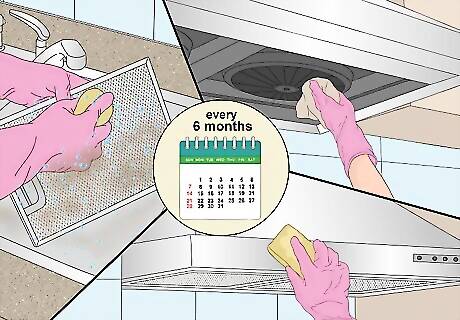
Clean the oven hood, grease filter, and fan blades every 6 months. If you cook daily, consider cleaning at least every month. Regular cleaning can reduce fire risks and improve your kitchen’s general hygiene. If your range hood filter is damaged or completely clogged and covered, you can also purchase a new one. Modern microwave systems sometimes have a small charcoal filter on top of the unit which filters out odors. Replace this filter every 6 to 12 months.



















Comments
0 comment